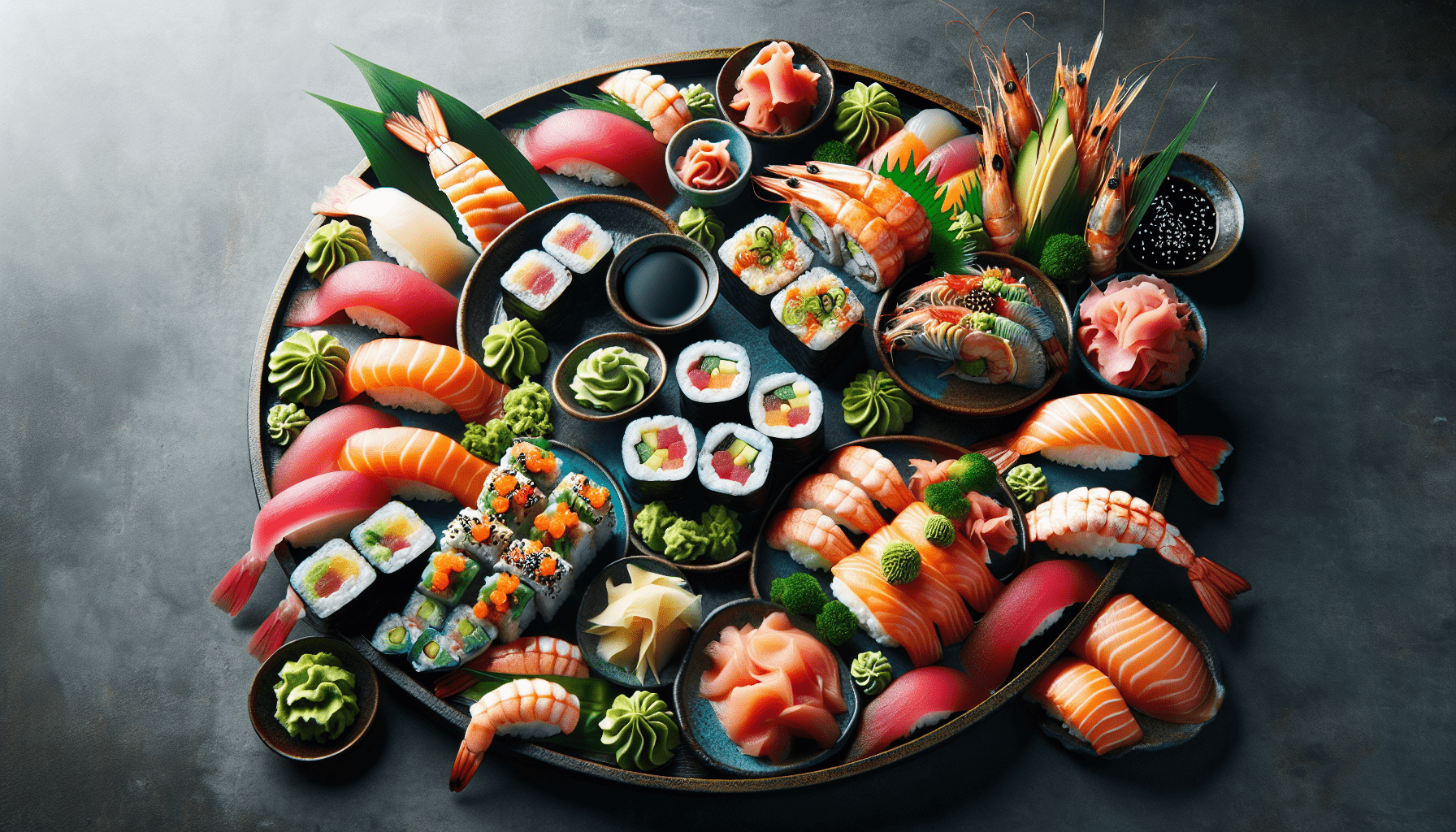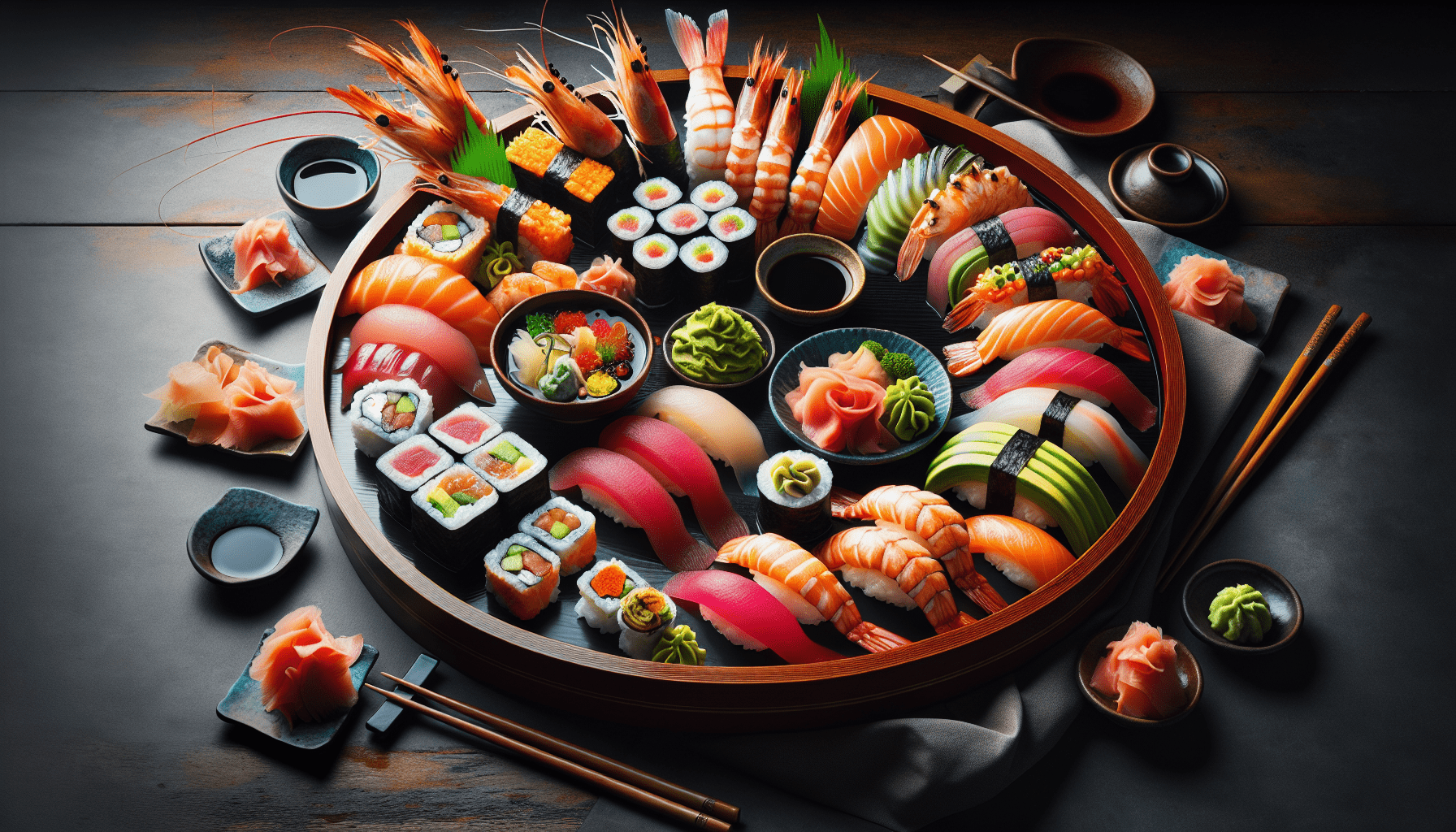TUMELLA Strongest Windproof Travel Umbrella (Compact, Superior & Beautiful), Small Strong but Light Portable and Automatic Folding Rain Umbrella, Durable Premium Grip, Fits Car & Backpack
$18.99 (as of April 27, 2025 19:00 GMT +00:00 - More info)Have you ever wondered why Japanese cuisine has captured hearts and taste buds all around the globe? It’s not just about the food; it’s about the experience, the artistry, and the profound respect for ingredients and seasons. This article will take you on a flavorful journey through some of the most beloved dishes from Japan, shedding light on their history, unique characteristics, and components that make them so irresistible.
A Celebrated Overview of Japanese Cuisine

Shop These Accessories for a Comfortable Trip
Japanese Cuisine: An Overview
Japanese cuisine is celebrated worldwide for its emphasis on seasonality, technique, and the meticulous art of preparation. It’s not just sushi and sashimi; the culinary landscape of Japan offers a plethora of delightful and distinct dishes. Whether it’s the light and crispy tempura, the savory umami of ramen, or the hearty warmth of a hot pot, Japanese cuisine manages to resonate deeply with anyone who tries it.
Tempura
A Brief History
Tempura was introduced to Japan by the Portuguese in the 16th century. The concept of frying food wasn’t native to Japan, but it has since been elevated to an art form. The Japanese adapted and refined the technique, making it uniquely their own.
What is Tempura?
Tempura is all about the lightness and crispiness. The trick lies in the batter—usually a mix of cold water, egg, and flour—kept cold and mixed just until the ingredients come together. What comes out of the fryer is a golden masterpiece that isn’t greasy but wonderfully light.
Common Ingredients:
| Main Ingredients | Details |
|---|---|
| Seafood | Shrimp, squid, and white fish are popular choices. |
| Vegetables | Sweet potatoes, bell peppers, and green beans shine in tempura form. |
How to Enjoy Tempura
Served with a simple dipping sauce typically made from dashi (Japanese soup stock), soy sauce, and mirin, tempura can be a stand-alone dish or part of a set meal. At its best, the batter’s delicate crunch contrasts perfectly with the tender, juicy seafood or vegetables inside.
Soba
Ancient and Nutty
Soba noodles have a rich history, crafted from buckwheat flour that gives them a distinct nutty flavor. These noodles are lighter than their wheat-flour counterparts and have been enjoyed since the times when ramen didn’t even exist.
How is Soba Served?
Soba can be served hot or cold, offering versatility that fits any season.
Typical Soba Varieties:
| Soba Type | Characteristics |
|---|---|
| Zaru Soba | Cold soba served with dipping sauce. |
| Kake Soba | Hot soba in a simple broth. |
Enhancements and Pairings
It’s common to pair soba with tempura or sudachi slices (a citrus fruit) for a burst of flavor. Soba is often enjoyed with a dipping sauce made from soy sauce, mirin, and dashi.

Shop These Accessories for a Comfortable Trip
Yakiniku
Japanese BBQ Delight
Inspired by Korean BBQ yet uniquely Japanese, Yakiniku emerged as a beloved culinary tradition in Japan. This delightful table-side grilling experience is centered around high-quality beef—specifically, the luxurious wagyu.
How to Yakiniku?
Here’s how it usually goes: You have a grill in the middle of your table, and you cook pieces of marinated meat and vegetables yourself. It’s interactive and social, making it a perfect meal for gatherings.
Common Ingredients:
| Meat Cuts | Notes |
|---|---|
| Wagyu Beef | Known for intense marbling and taste. |
| Pork | Also popular, often thinly sliced. |
| Vegetables | Bell peppers, onions, and mushrooms. |
Enjoyment Tips
Pair your yakiniku with a cold beer or a whisky highball to wash down the smoky, savory flavors. Trust me, it’s a match made in food heaven.
Japanese-Style Curry
A Comfort Food Staple
Curry might not be the first dish that comes to mind when you think of Japan, but it’s wildly popular. The British introduced curry to Japan in the Meiji era, and the Japanese made it their own by using a roux from boxed curry bricks.
What’s in Japanese Curry?
Japanese curry is typically less spicy and more sweet compared to Indian or Thai curries. It has a rich, thick gravy-like consistency.
Common Ingredients:
| Main Ingredients | Details |
|---|---|
| Proteins | Chicken, beef, or pork, often fried. |
| Vegetables | Carrots, potatoes, and onions. |
| Curry Roux | Usually comes in blocks for easy use. |
How to Serve
Usually, Japanese curry is served over rice and accompanied by pickled vegetables, like fukujinzuke. Popular variations include katsu curry, which features a fried pork or chicken cutlet atop the rice and curry.
Karaage
Crispy Chicken Goodness
If you’re a fan of fried chicken, karaage is going to be your new obsession. Karaage is Japanese fried chicken that’s crispy on the outside and juicy on the inside.
The Magic of Karaage
What sets karaage apart is the marinade, which typically consists of soy sauce, ginger, and garlic. After marinating, the chicken is coated in potato starch and fried until it reaches crispy perfection.
Common Ingredients:
| Main Ingredients | Preparation |
|---|---|
| Chicken Thighs | Marinated in soy, ginger, and garlic. |
| Potato Starch | For the coating. |
How to Enjoy Karaage
Usually served with shredded cabbage and a dollop of mayonnaise, karaage is also a staple in bento boxes and set meals (teishoku). It’s equally at home in Japanese pubs (izakayas) and upscale restaurants.
Hot Pot/Nabe
Cozy and Communal
Hot pot dishes, collectively known as nabe, are communal affairs meant to be enjoyed with family and friends. They’re the ultimate comfort food, especially during the cold months.
Types of Nabe
Nabe offers a variety of styles, each unique and wonderful in its own way.
Popular Hot Pot Varieties:
| Type | Description |
|---|---|
| Sukiyaki | Beef with soy-based sauce, often dipped in raw egg. |
| Shabu-shabu | Thinly sliced meat cooked in hot broth, served with dipping sauces. |
How to Nabe
A pot of simmering broth is placed in the center of the table, and various ingredients like meats, vegetables, and tofu are added. It’s simple but satisfying, and there’s something incredibly cozy about cooking your meal right at the table.
Okonomiyaki
The Savory Pancake
Okonomiyaki, translated as “what you like, grilled,” is a versatile savory pancake that you can customize to your heart’s content. It’s like the Japanese answer to pizza: adaptable, satisfying, and universally loved.
Regional Styles
The two most famous styles of okonomiyaki are Osaka and Hiroshima.
Okonomiyaki Styles:
| Style | Preparation Method |
|---|---|
| Osaka Style | Ingredients are mixed into the batter. |
| Hiroshima Style | Ingredients are layered rather than mixed. |
What’s Inside?
Common ingredients include cabbage, pork belly, and squid, but the list can go on. Toppings like bonito flakes, Japanese mayo, and okonomiyaki sauce (a sweet-savory concoction) are the finishing touch.
Ramen
Bowl of Comfort
Ramen has reached cult status globally, but its humble origins trace back to China. It’s fascinating to note how this simple noodle soup dish has been embraced and uniquely adapted by each region in Japan.
Types of Ramen
Each region in Japan has its unique take on ramen, resulting in a rich tapestry of flavors and styles.
Common Ramen Styles:
| Style | Characteristics |
|---|---|
| Shoyu | Soy sauce-based broth, often clear. |
| Miso | Rich and hearty, originating from Hokkaido. |
| Tonkotsu | Creamy pork bone broth from Kyushu. |
Special Hokkaido Ramen
One of the must-try ramen styles is from Hokkaido, featuring a miso-flavored broth. Unique toppings like corn and butter make this particular ramen both rich and comforting.
How to Enjoy Ramen
Slurping is not just accepted; it’s encouraged in Japan. The act of slurping not only cools the noodles but also enhances the dish’s flavors.
Japanese cuisine is a beautiful tapestry of flavors, techniques, and traditions. Each dish offers its unique experience, inviting you to savor the nuances and craftsmanship that go into its preparation. Whether you’re a seasoned foodie or new to the wonders of Japanese food, there’s always something new to discover and enjoy. So go ahead, pick a dish that intrigues you, and let your palate explore the celebrated world of Japanese cuisine.
Shop These Accessories for a Comfortable Trip






